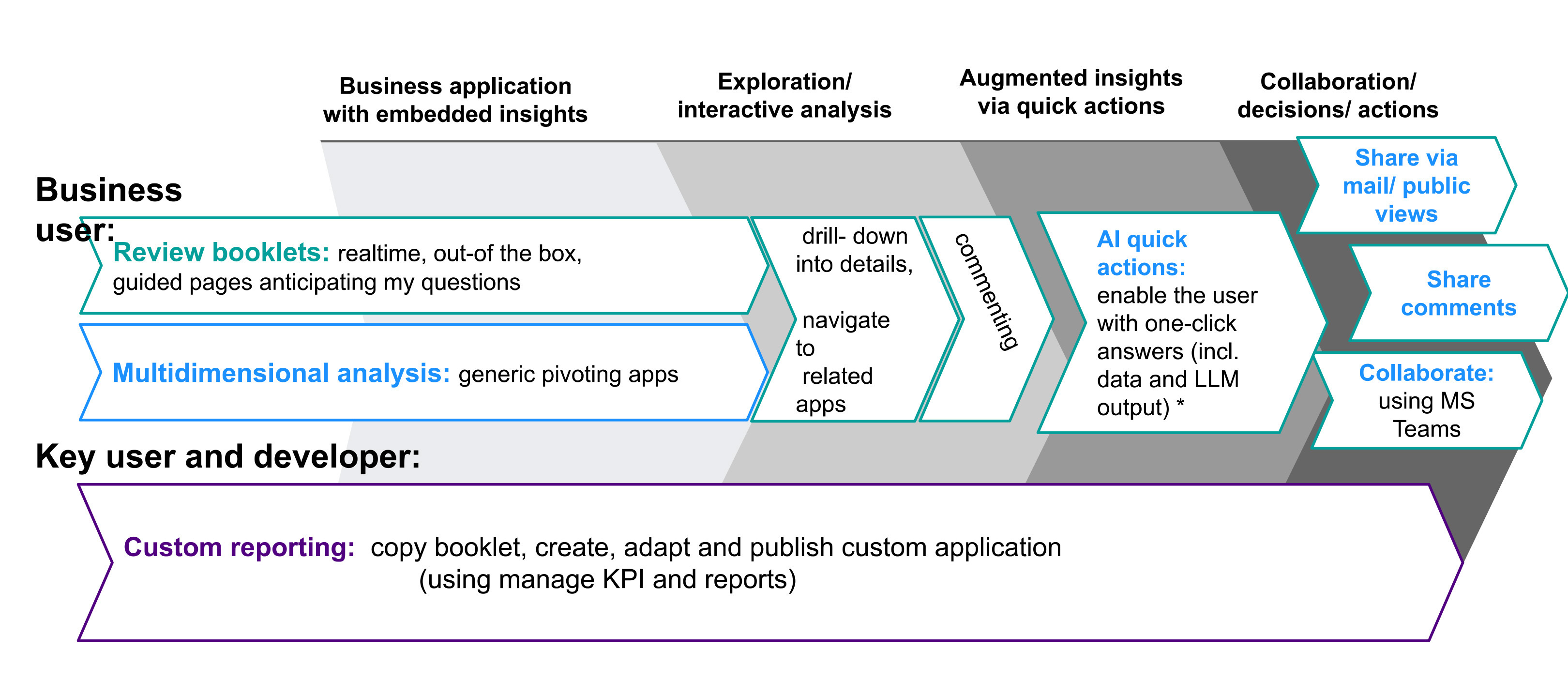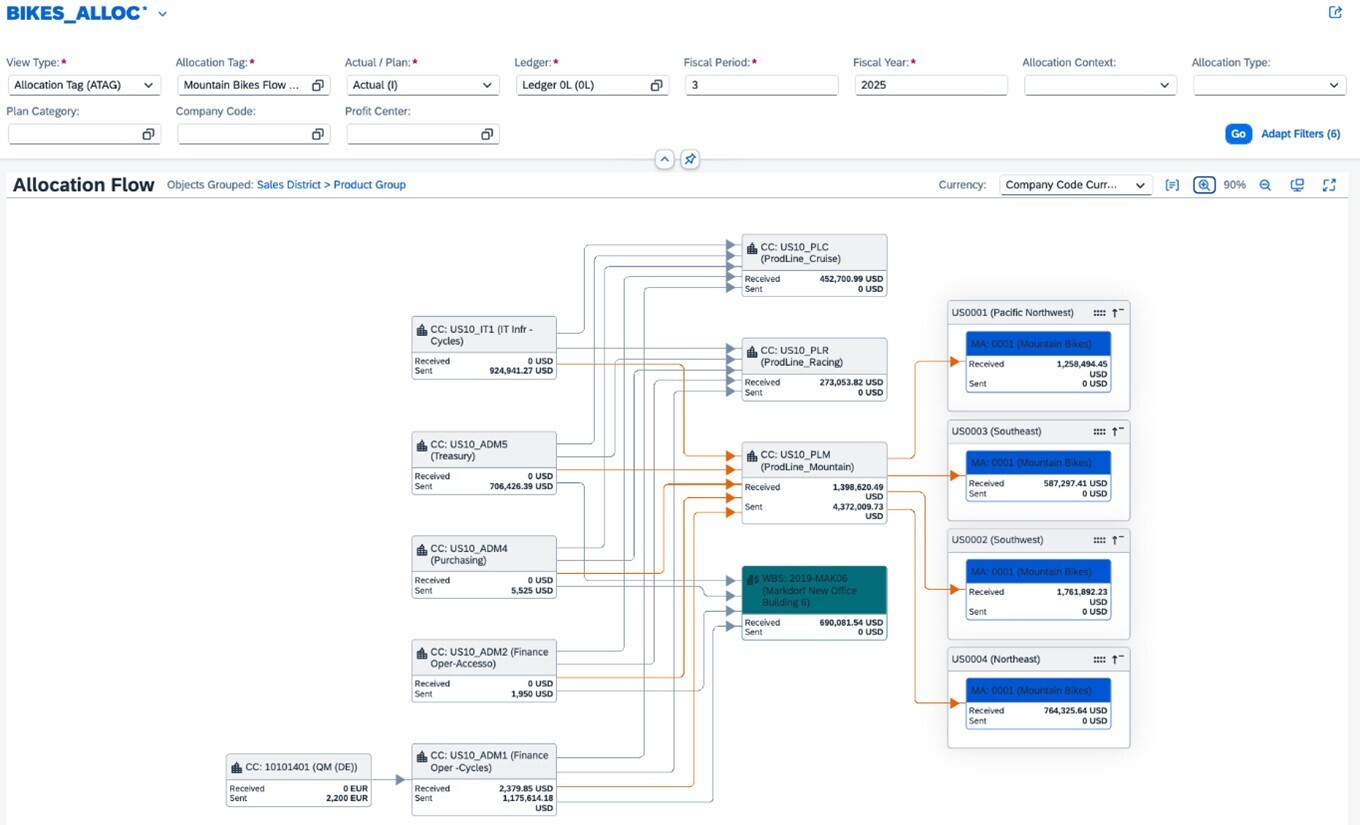
S/4HANA Public Cloud isn’t a one-size-fits-all answer— by design. It was born serving midsize companies and is now moving up-market, bringing larger enterprises along as SAP rethinks how overhead is managed. The goal: simplify what’s become overly complex while delivering frequent innovation without the upgrade headaches of the past.
In this session, Birgit Oettinger, SAP Product Manager for Management Accounting, discusses:
- New strategies for cost center and project reporting, including Review Booklets
- Improvements for project settlement
- Planned AI features for Universal Allocation
Reporting, Reimagined: Review Booklets + Real Time
The biggest shift you’ll see first is in reporting. SAP is replacing a long list of legacy reports with a smaller set of Review Booklets—predefined, real-time, out-of-the-box reports that merge SAP Analytics Cloud (SAC) capabilities with a Fiori UI. Think one consolidated Cost Center Review Booklet instead of hunting through dozens of tiles. Pages bundle YTD, period comparisons, and plan-vs-actuals; page groups organize Actuals, Plan/Actual, and KPI/Statistical Key Figures so you can calculate metrics like training cost per employee.
Controllers can filter globally or per page, pivot rows/columns on the fly, add conditional formatting, drill to line items in ACDOCA/ACDOCP, and leave comments at the cell or report level—then share and collaborate (e.g., via Teams). You can also use the “Manage KPIs and Reports” app to copy and adjust SAP content or build your own.
Early AI is arriving too. Rather than “ask anything,” today’s experience focuses on guided questions that generate narrative insights (e.g., which cost centers have the highest deviations). Expect rapid expansion—public cloud ships two main releases per year, with opt-in features so new capabilities don’t disrupt your month-end.

Universal Allocation: Harmonized—and Easier to Live With
Universal Allocation (UA) consolidates diverse allocation methods into a single framework aligned to the Universal Journal. While some classic CO objects aren’t in public cloud (e.g., internal orders, business processes/ABC templates), UA covers cost center, profit center, and margin analysis contexts with clear behavior per context.
Two usability upgrades that matter day to day:

- Allocation Flow visualization shows sources, targets, and amounts with interactive lines you can click to see accounts, cycles, and totals—great for explaining “what moved where.”
- Manage Allocation Changes compares versions and highlights differences in red, removing the side-by-side screen shuffle.
If you still use classic KSU/KSV cycles, a scheduled migration job can convert cycles to UA and provide a log of what moved—part of the cloud “principle of one” that favors one modern approach over multiple legacy paths once feature parity is met.
Settlement: From Slog to Streamlined
Public cloud leans on event-based processing wherever possible to cut period-end effort. For projects, maintenance orders, and service orders, SAP is building a new mass-maintenance app for settlement rules plus an API—so you can manage rules centrally or feed them from Excel. With Universal Parallel Accounting (UPA) always available in public cloud, settlement runs per ledger (you start once; SAP processes for all selected ledgers), supporting local GAAP and group GAAP without manual workarounds.
A major innovation is event-based settlement for investment projects and assets under construction (AuC). Every posting to the project generates a corresponding AuC update—line by line, not just totals—so auditors can click from the fixed asset all the way back to the originating document. Partial capitalization remains possible for interim closings, but the default is clarity with fewer periodic steps.
Intercompany CO Postings: Clearer Clearing
Intercompany allocations, repostings, and activity allocations still respect accounting’s rule: each company code must balance to zero. Historically, configuring the clearing line (P&L vs. balance sheet) was tricky. Public cloud now provides a straightforward configuration so you can choose the account type. You still perform intercompany billing for taxes and open items where required—but if two entities sit in the same tax group or you handle billing externally, you can align the accounting treatment without special tickets.

Clean Core, Faster Pace
Public cloud reduces scope and variability to make continuous delivery feasible—and testable at scale. You’ll configure less than in on-prem, but you gain rapid innovations, simpler choices (the “principle of one”), and opt-in activation so releases are a non-event. That trade-off is key to keeping overhead management powerful yet understandable as SAP goes up-market beyond professional services into complex production environments.
Note: Some capabilities discussed are forward-looking and subject to change. Don’t base purchase decisions solely on planned features.

